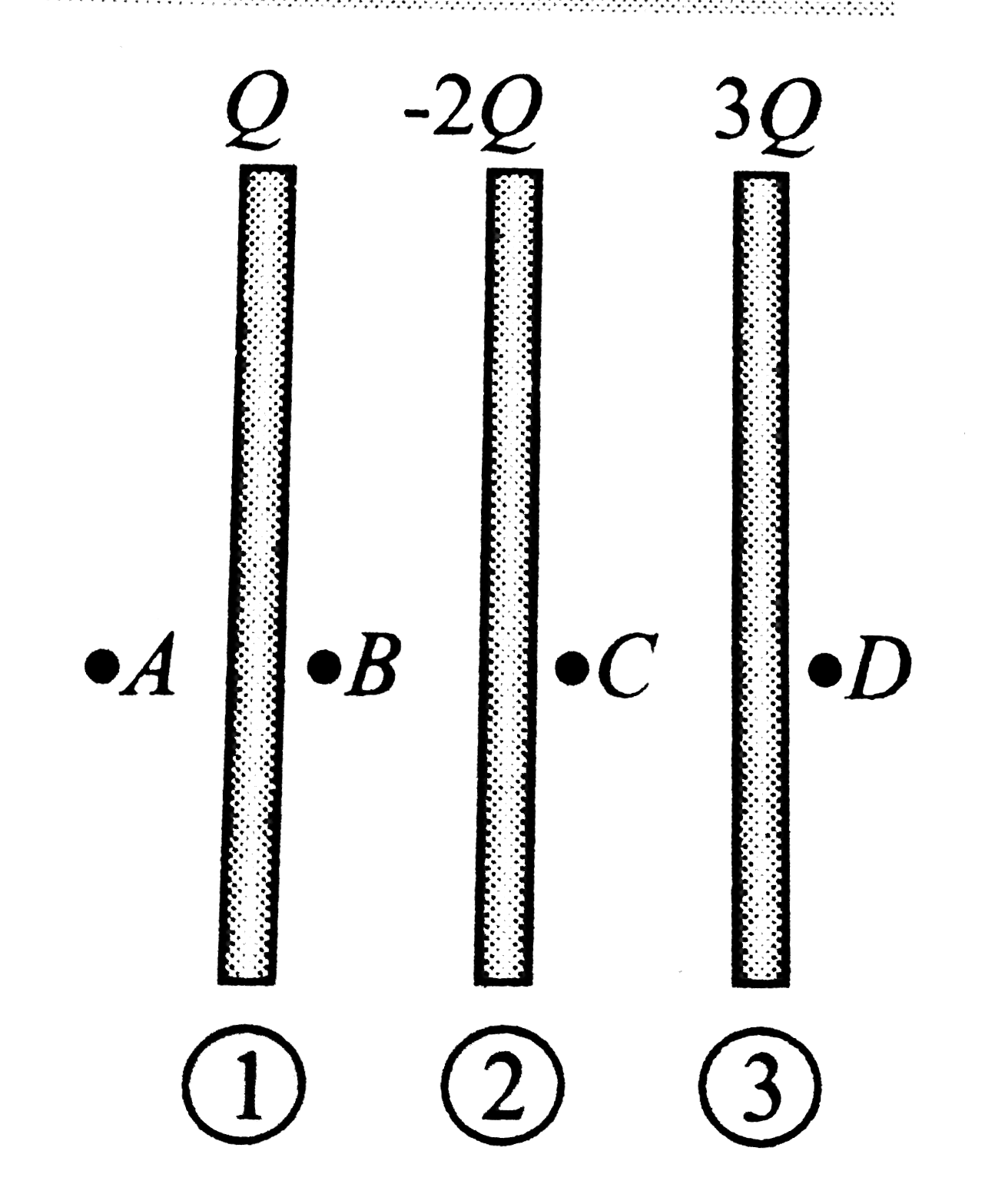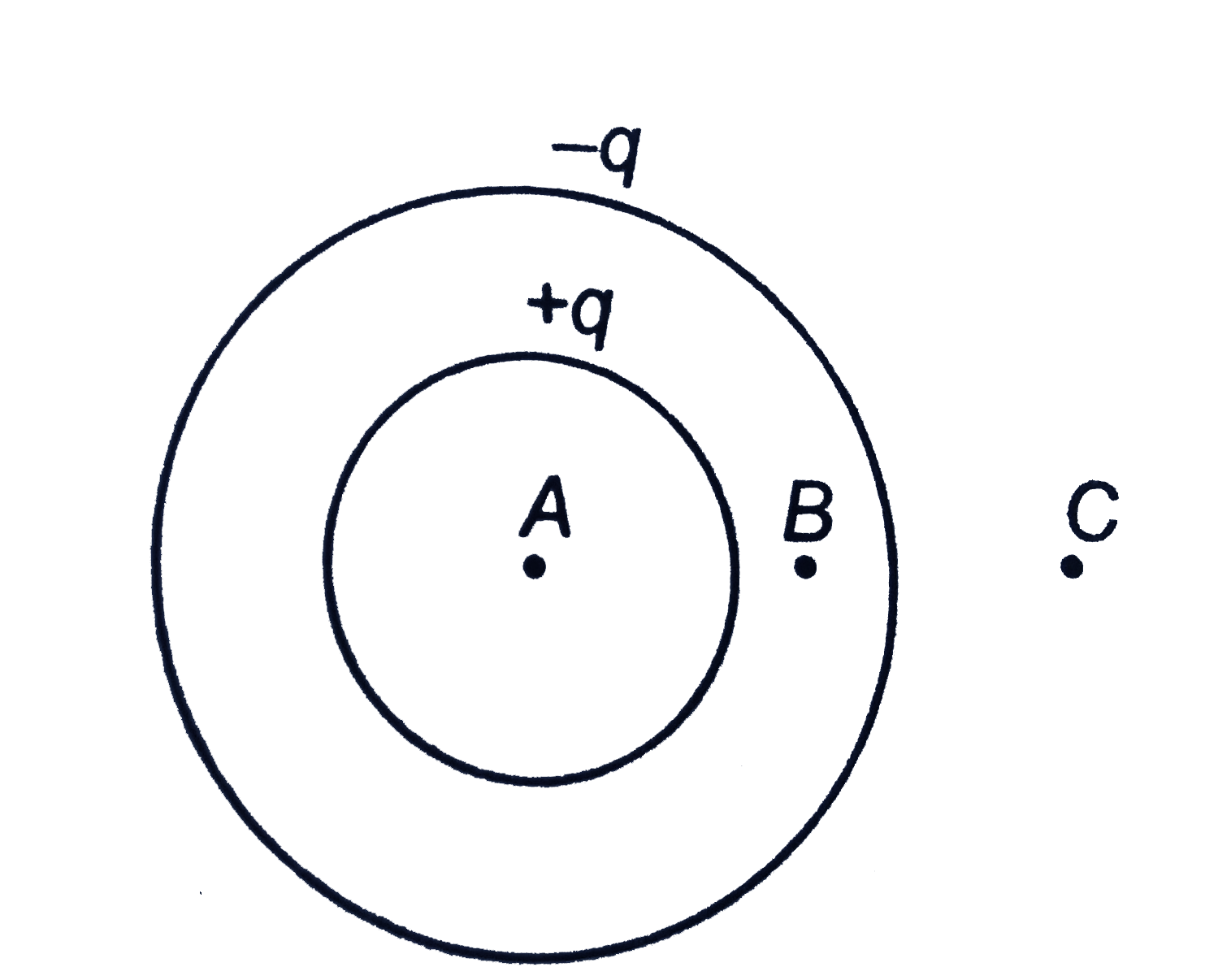A ball at O is in equilibrium as it is attached with two strings AO and DO, which are tied at A and D. AO=DO=a(√5). The charges at A, B, C, abd D are +q,+Q,+2Q,and−q, respectively. Find the correct options. The ball at O is positively charged.

The ball O cannot remain in equilibrium.
If the charge at C is +Q, the ball will remain in equilibrium.
The ball O will remain in equilibrium
If the charge at A and D and charge at B and C are interchanged, the ball will remain in equilibrium.
The correct Answer is:C, D
c.,d.
For ball O (positively charged) to be in equilibrium at the middle of BC

⎡⎢
⎢
⎢⎣q4πε0(a√5)2+q4πε0(a√5)2⎤⎥
⎥
⎥⎦cosθ+Q4πεa2
=2Q3πε0a2
q=5√5Q2 (as cosθ=aa√5)
If q=5√5Q/2, ball will be in equilibrium , even if charge are interchanged (a) is wrong and (c) and (d) are correct. If charge as C is +Q, then
2qcosθ5+Q=Q
or 2qcosθ5=0
Qcancel=0,theta=90^(@), which is not possible (b) is wrong.
Similar Questions
Two charges q1andq2 are placed at (0,0,d) and (0,0,-d) respectively. Find locus of points where the potential is zero.
View SolutionIn figure, the charges on C1,C2, and C3, are Q1,Q2, and Q3, respectively.
 .
.
View SolutionTwo point charges q and –q are at positions (0,0,d) and (0,0, –d) respectively . What is the electric field at (a,0,0 ) ?
View SolutionTwo point charges q and –q are at positions (0,0,d) and (0,0, –d) respectively . What is the electric field at (a,0,0 ) ?
View SolutionFour charges of +q, +q +q and +q are placed at the corners A, B, C and D of s square. The resultant force on the charge at D
View SolutionThree large conducting sheets placed parallel to each other at a finite distance contain charges Q,−2Q,and3Q, respectively. Find the electric fields at points A, B, C, and D.

View SolutionThe positions of two point charges q1 and q2 are →r1 and →r2 , respectively. Find the position of the point where the net field is zero due to thses charges.
View SolutionTwo concentric spherical shells have charges +q and −q as shown in figure. Choose the correct options.

View SolutionFour charges of +q, +q +q and +q are placed at the corners A, B, C and D of s square. The resultant force on the charge at D
View SolutionThe corners A, B, C, and D of a square are occupied by charges q,−q,2Q, and Q, respectively. The side of square is 2b. The field at the midpoint of side CD is zero. What is the value of q/Q?
View Solution
